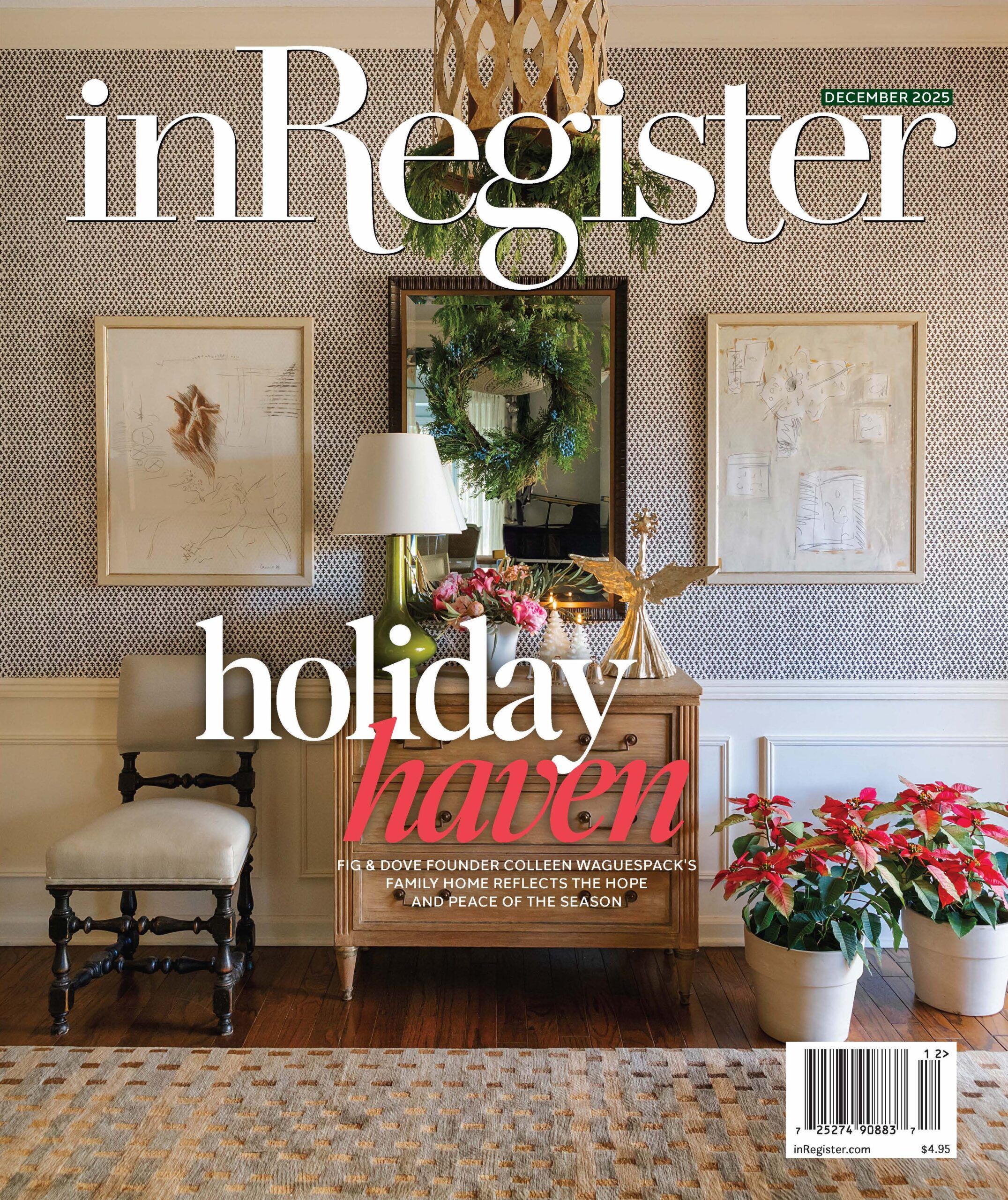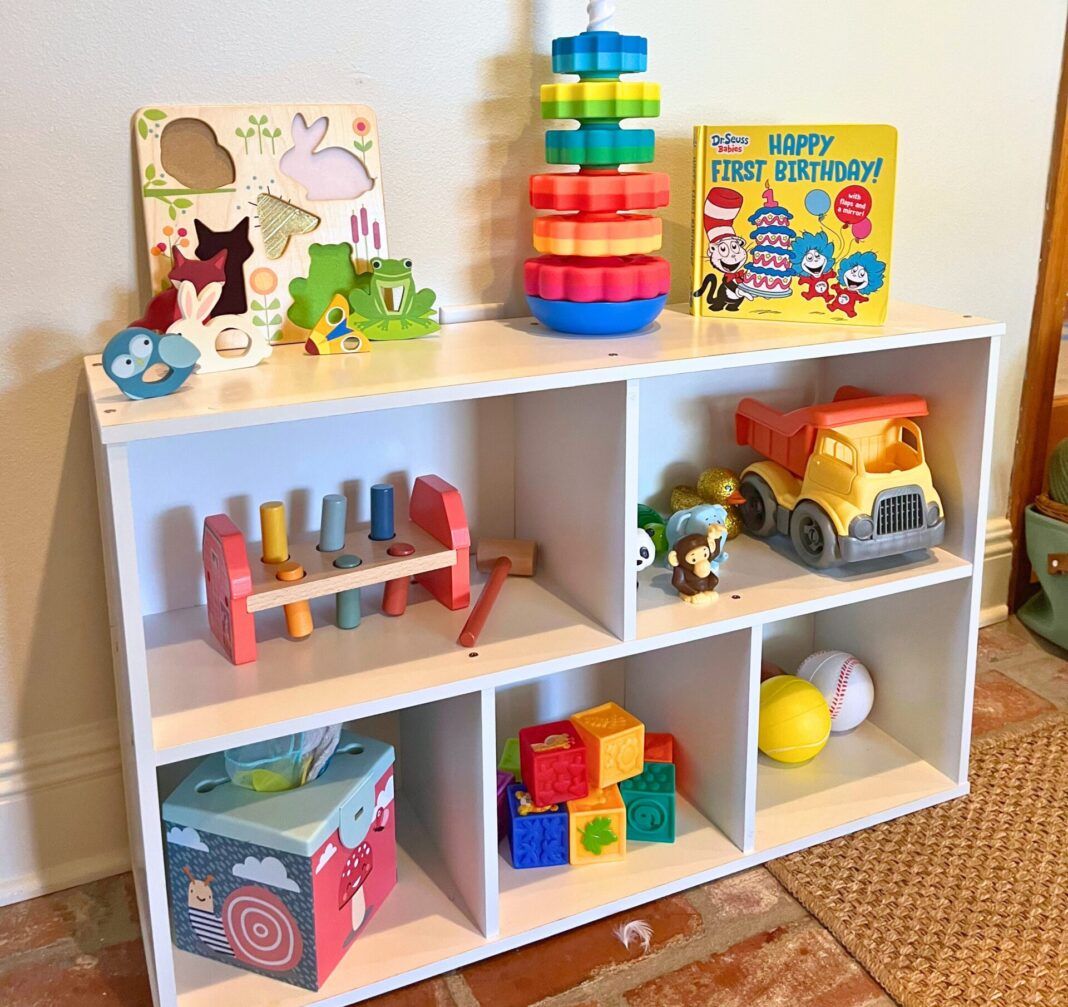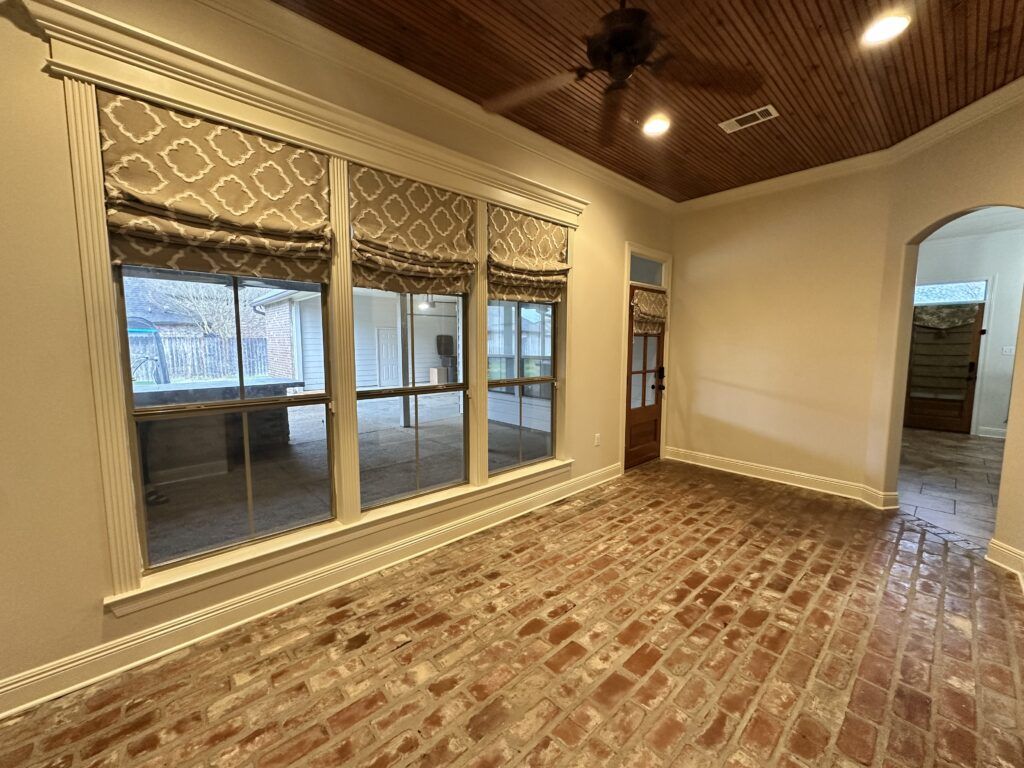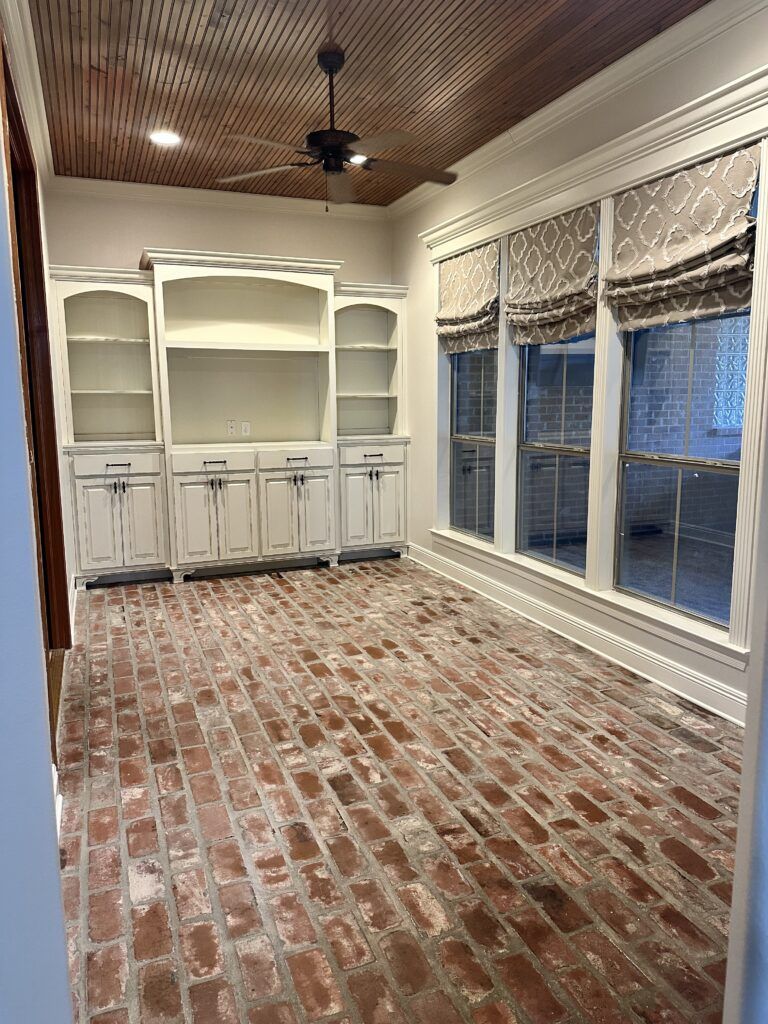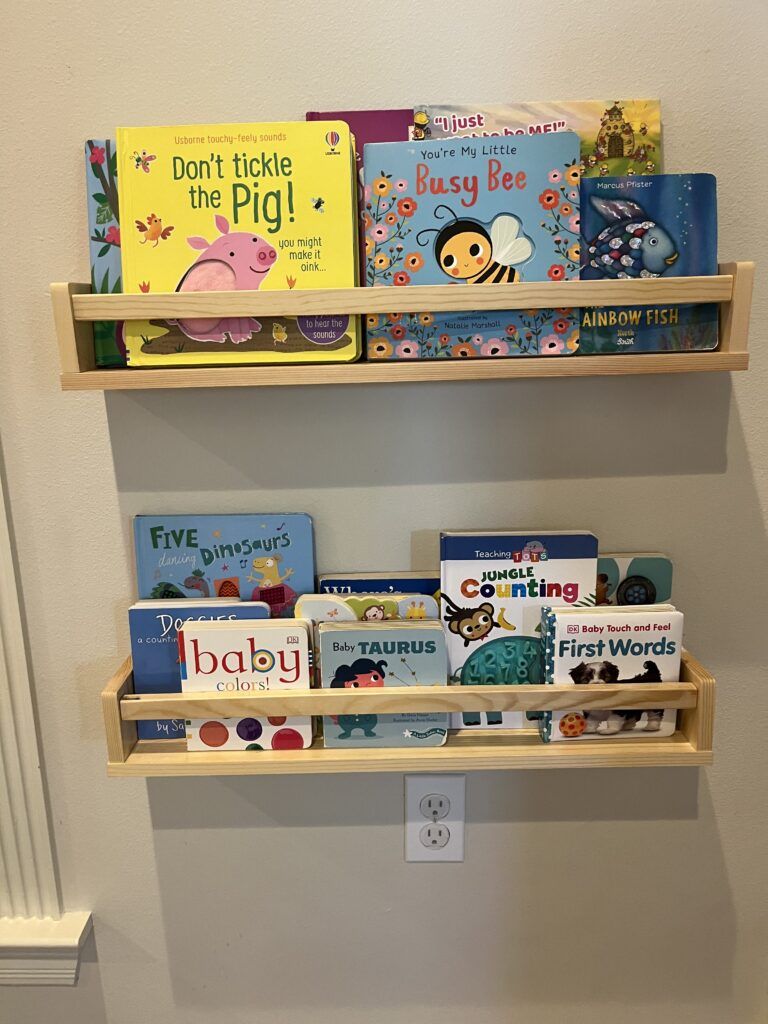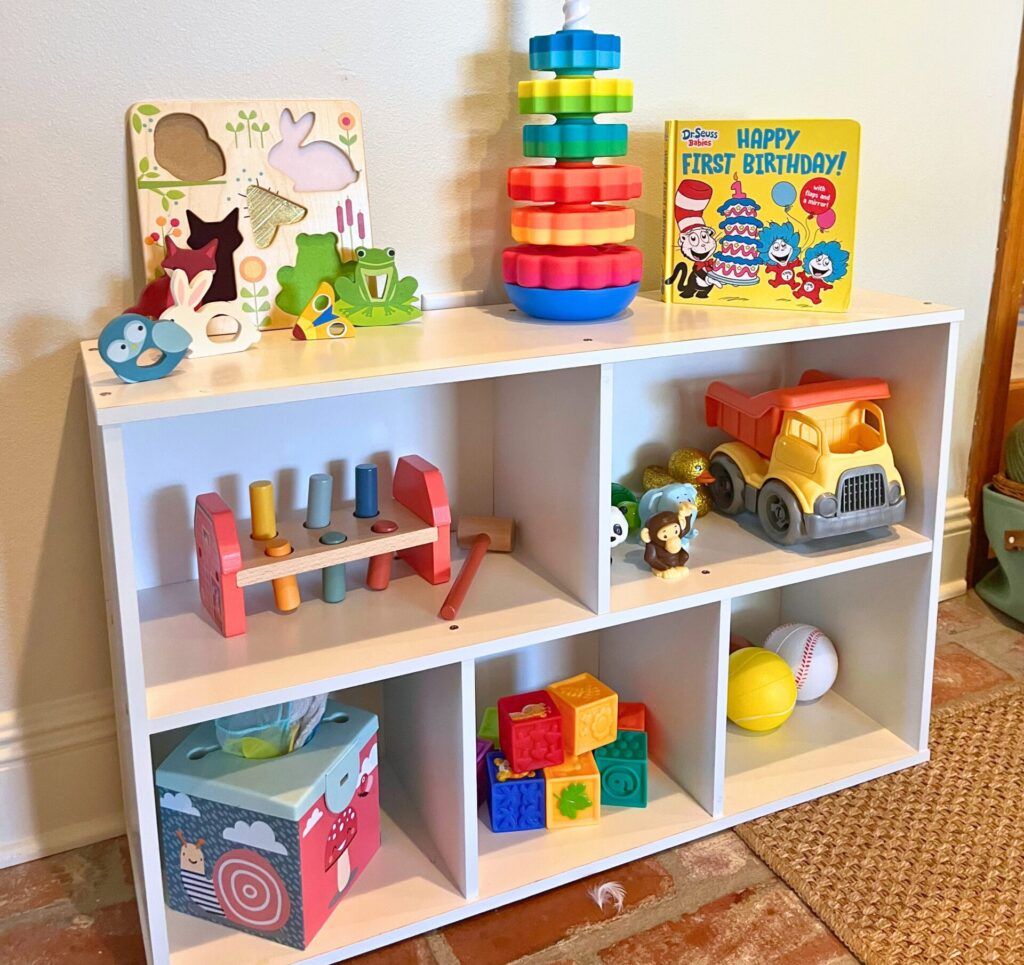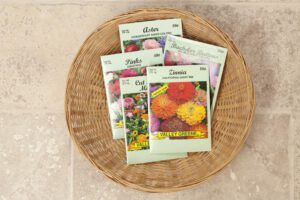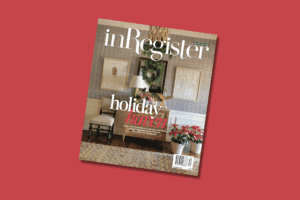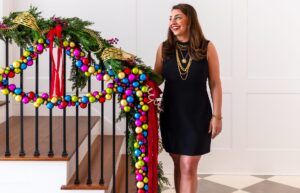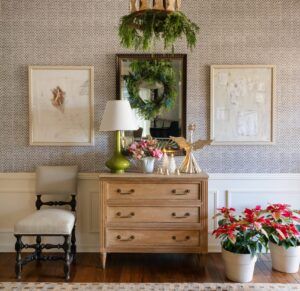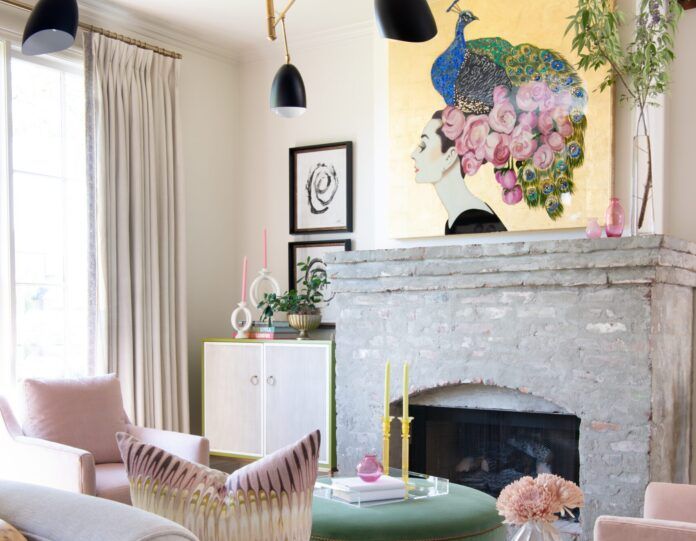We Tried It: Playroom Makeover with Learn to Play
Since the dawn of time, grimacing through unsolicited advice has been a rite of passage for new parents. But today’s moms face a uniquely modern chorus. Resounding opinions from other parents and advice from credentialed (and self-proclaimed) experts are available 24/7 thanks to the ever-present hum of social media.
The endless tips, tricks, rules and hacks I scroll through on a daily (OK, hourly) basis sometimes make playing with my 13-month-old son, Vincent, feel like a chess match. In what feels like an endless loop of “buy this,” “do that” and “by all means avoid these,” there is Learn to Play (LTP) with Kelli Delarue.
I discovered LTP at the recommendation of inRegister editor Riley Bienvenu Bourgeois, who wrote this article when Kelli launched her playroom organization and design business in 2022. Immediately after following LTP on Instagram, I became a raving fan of her realistic approach to toys, play and parenthood. In a nutshell, the LTP approach is a Montessori adaptation for the modern, everyday family.
Through her Instagram, website and personalized playroom consultations, Kelli shares practical, actionable advice for cultivating meaningful play, drawing on her experience as both an early childhood educator and a mom of three. And best of all, the vast majority of her advice is simple and free.
The morning we closed on our new house, my first order of business was booking Kelli for a playroom makeover.
The rectangular room overlooking the patio with built-ins was a major selling point of our new home for me. I saw the golf simulator in my husband’s eyes the first time we stepped into it and assured him that in 15 to 20 years, I would consider it. For now, I was envisioning an imaginative, bright space for Vincent and his little sister, whom we are excitedly awaiting this fall.
The Consultation
Kelli arrived right on time with her littlest one happily in tow. “A sunroom has been on my playroom bucket list,” she said excitedly. Ahead of the consultation, Kelli sent rug and play mat recommendations, which I diligently purchased and rolled out ahead of her arrival.
“In this house, everything you say is law,” I tell her, nodding toward the floor before gesturing to the five-cube open shelf she’s declared a playroom essential.
She opens the built-in cabinets I hastily stuffed with toys during the move, peruses the contents of the cube shelf, tours his bedroom and shakes her head approvingly. I beam with the pride of a star student.
Next comes her advice, starting with the addition of child-proof locks to the built-in cabinets designated for toy storage. Otherwise, the system of toy rotation is a moot point because he will still have access to every single toy, she explains.
Next, she advises placement for bookshelves—one low enough for him to reach and one a bit higher for as he grows, right next to his cozy chair to create a reading nook. And don’t forget to put a frame to display his artwork above them, she says as I pull out a front-opening art frame that some TikToker successfully influenced me to purchase.
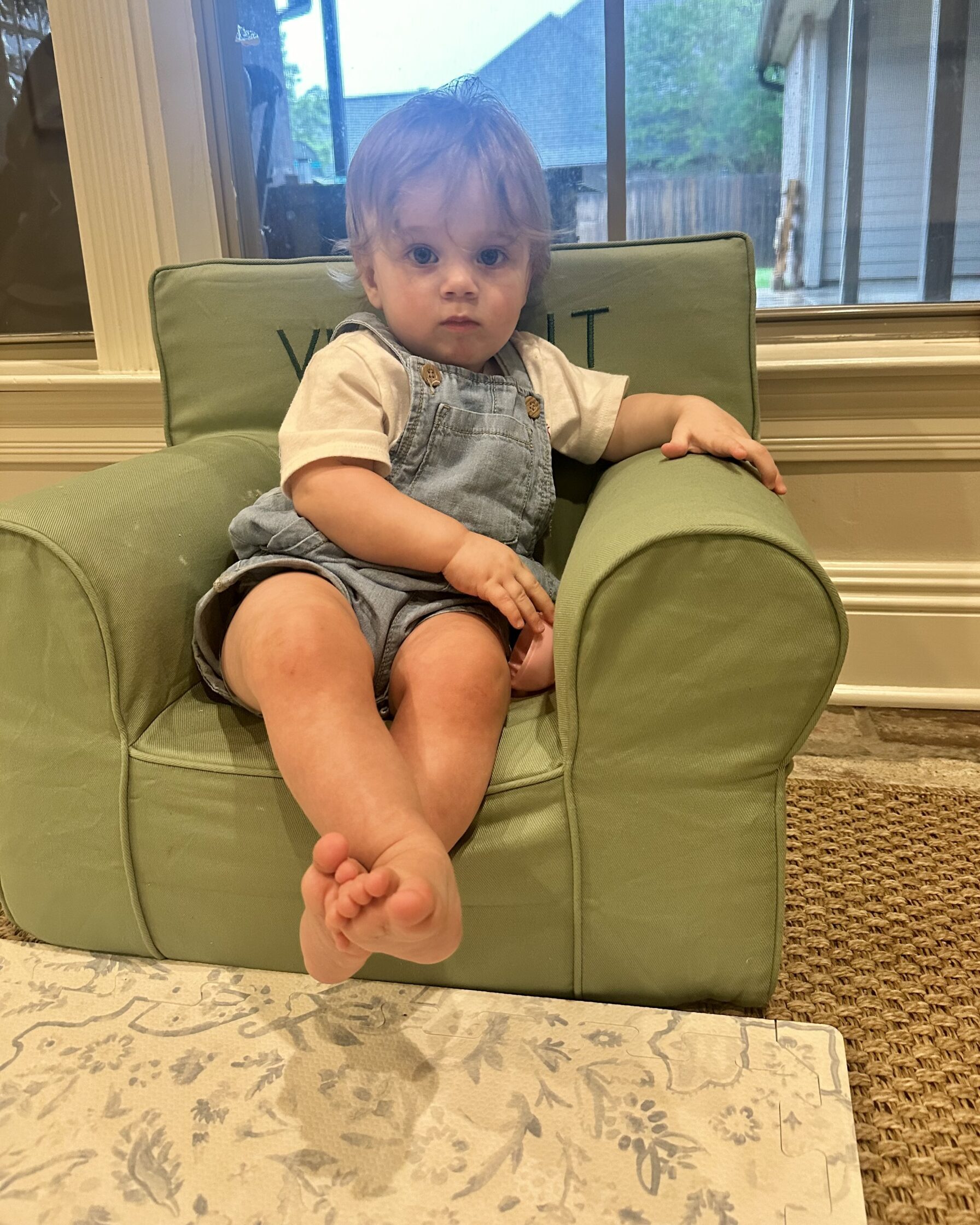
Lastly, she recommended a spot for a roll of paper, which she assures me will not encourage Vincent to create murals around our home as long as there is a lot of supervision and proper modeling. Admittedly, the latter is the only one of her homework assignments we have not completed. Yet.
The Makeover
A few weeks after the consultation, Kelli arrived promptly at 10:30 a.m., holding an iced coffee and a water bottle, with the aura of a mom who is child-free and mission-focused for the day. By this time, we had fully moved in and had Vincent’s first birthday party. While we had opened several of his new toys and included them in his cubby shelf, many of them remained in the cabinets as I fretted over how frustrated they might make him. Kelli to the rescue!
She dove into sorting toys, with permission to discard anything broken or with missing pieces. Typically, she would also sort toys that are no longer developmentally appropriate and mark them for donation. Instead, she adds these to a “Baby #2” bin.
When she tapped on my office door a couple of hours later, I was giddy. She promptly begins the playroom tour, complete with an explanation of the Learn to Play Method, of which toy rotation is a hallmark.
She stocked each cubby with toys that support specific skills, such as fine motor, sensory exploration, small-world play and building. A wooden puzzle and board book sit neatly on top, within easy reach. She also swapped the full alphabet puzzle for a five-piece animal version—something I had never considered, despite painstakingly reassembling the 26-letter puzzle each evening.
The Method
The select five to ten toys in the cubby shelf are considered “in rotation.” She sorted everything else that is “out of rotation” into clear bins and stacked them neatly in the built-in cabinets. She organized each bin by developmental skill rather than toy type, with the exception of balls. “Every boy mom needs a box of balls handy. Trust me,” she says.
This toy organization system eliminates all the guesswork from the toy rotation process. If a toy came from the fine motor bin, simply pop it back in and pick another from the same category for that cubby. The same goes for gross motor, sensory, small world play and beyond. It’s a thoughtful yet low-maintenance approach that keeps play fresh, purposeful and easy to manage.
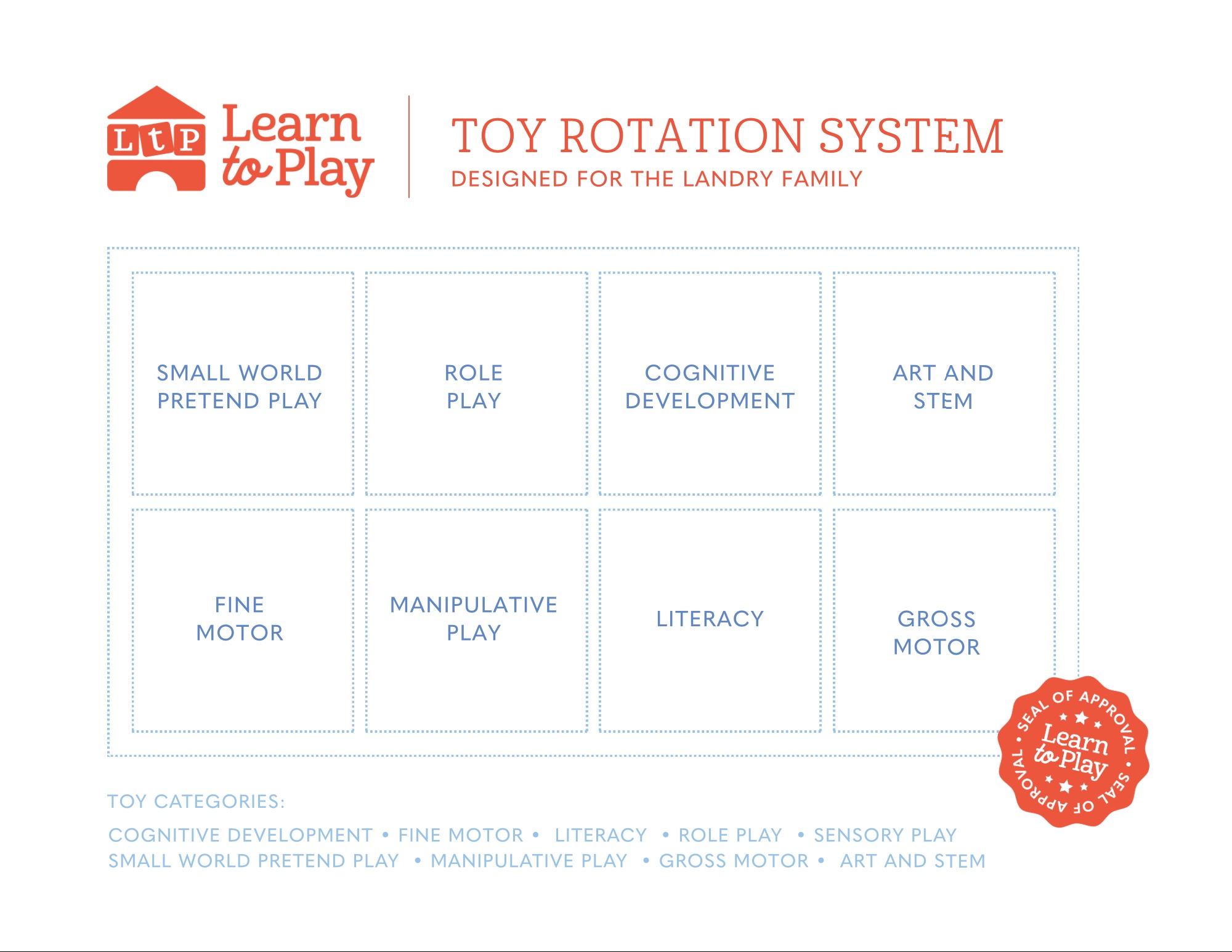
As she continues going through the toys that are out of rotation, I spot the Bluey drum set, boasting 16 songs on its box, and am a bit shocked that it was not included in the purge. Maria Montessori would never.
“Save it for a rainy day,” Kelli says. “A noisemaker like that is perfect for when you’ve been cooped up all day and need 30 minutes to make dinner.” Amen.
The Results
Since the playroom makeover, play has felt more intuitive, and Vincent is noticeably more engaged with his toys. I’m spending far less time hunting for puzzle pieces in the evenings and relishing the quiet joy of watching him focus.
When I notice a toy hasn’t left its cubby for a day or two, I make a quick swap from the matching bin and, without fail, he greets the “new” toy with fresh enthusiasm. It’s a small shift that brings big results.
Best of all, I’m no longer caught in the cycle of wondering what to buy next. Instead, I have confidence in a thoughtfully curated cabinet full of toys that actually get used. And when the itch to shop inevitably strikes, I happily wait for Kelli’s Instagram stories—where she invites followers to share their child’s age, gender and interests for personalized toy recommendations—or I pop over to Modern Munchkin to browse a selection of LTP-approved favorites that I know will earn their spot in the rotation.
To learn more about Learn to Play with Kelli DeLarue, visit her website. To follow along on other playroom makeovers, be sure to follow her on Instagram.

